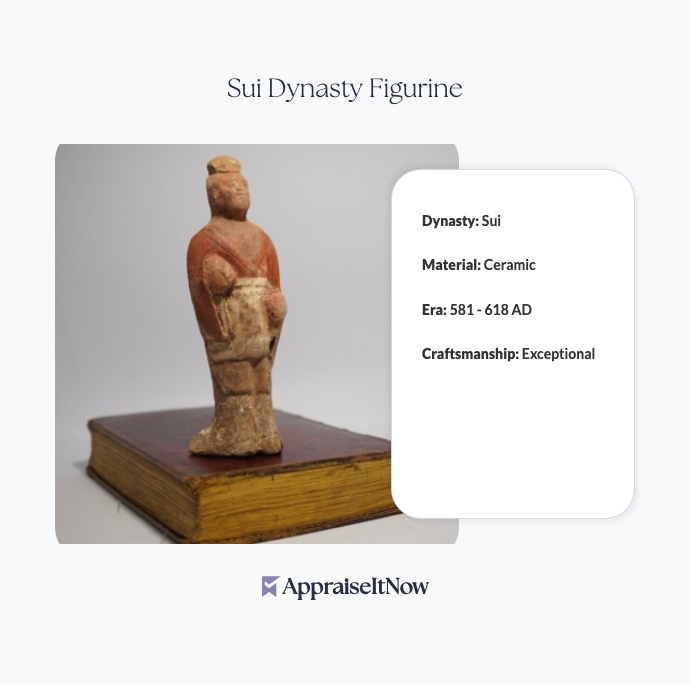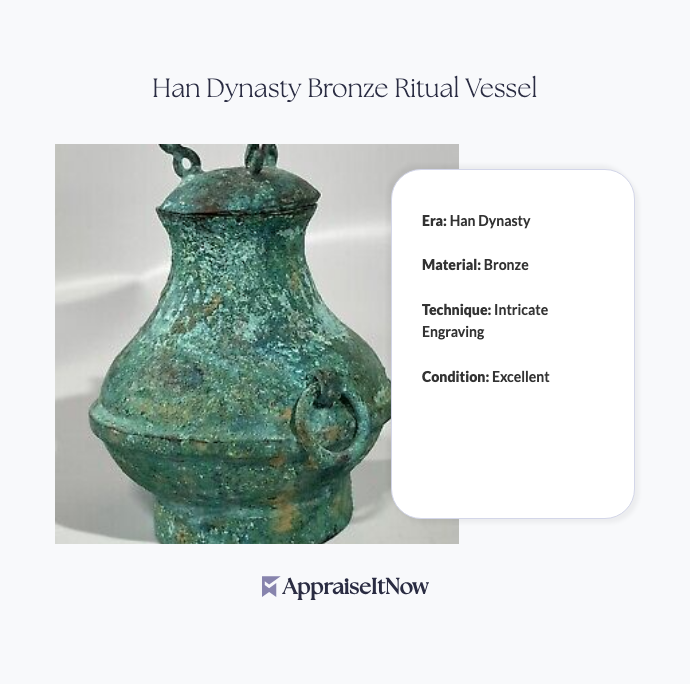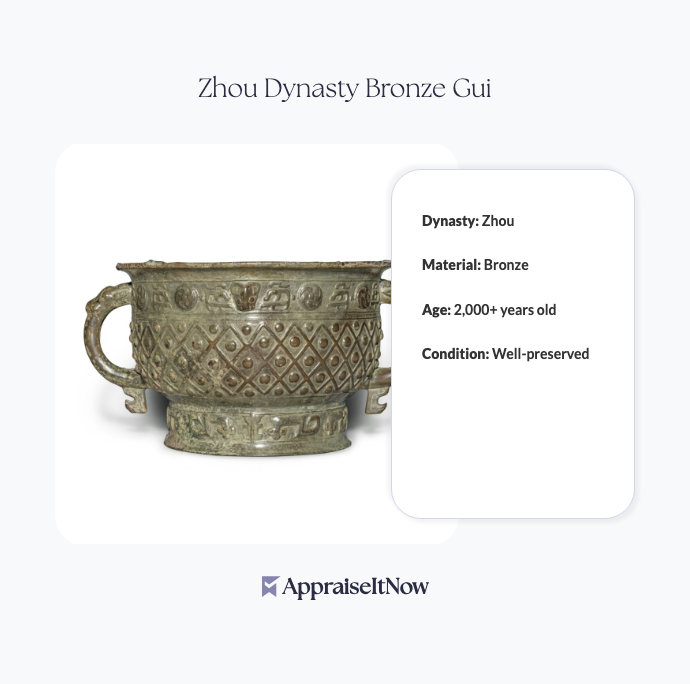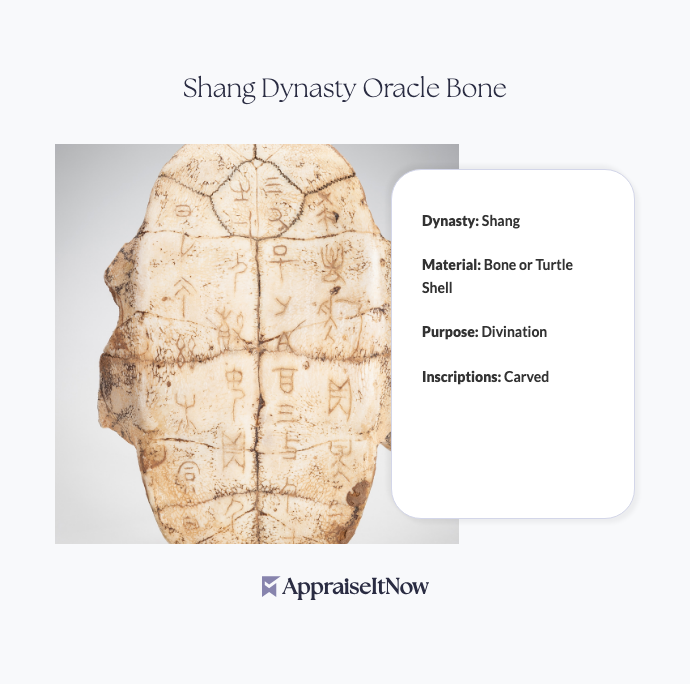<h1>How to Get Your Sui Dynasty Figurine Appraised</h1>
<p>A Sui Dynasty figurine from 581–618 AD represents far more than a ceramic object—it's a tangible connection to one of ancient China's most pivotal historical periods. Whether you've inherited a family treasure, discovered one at an estate sale, or are considering a purchase, understanding its value requires professional evaluation by someone with expertise in <a href="/blog/appraising-asian-art-and-antiques-understanding-cultural-significance-and-value">Asian art and antiques</a>. Current market estimates place quality Sui Dynasty figurines in the <strong>$12,000 to $18,000 range</strong>, though individual pieces vary significantly based on condition, provenance, and artistic merit.</p>
<h2>Understanding Sui Dynasty Figurine Values</h2>
<p>Sui Dynasty ceramics hold particular significance in the collecting world because they represent a transitional moment in Chinese pottery history. During this brief 37-year reign, artisans perfected techniques that would define the subsequent Tang Dynasty's golden age of ceramic production. The figurines from this era showcase exceptional craftsmanship, intricate detail work, and the distinctive vibrant glazes that collectors actively seek today.</p>
<p>When asking what the most sought-after porcelain and figurines are, Sui Dynasty pieces consistently rank among the top categories. Their rarity stems from the dynasty's relatively short lifespan and the fragile nature of ceramic artifacts—most pieces that survived the last 1,400 years show signs of use and aging. Your figurine's specific value depends on whether it features the characteristic traits appraisers evaluate: refined form, meticulous sculpting, intact glazes, and documented provenance.</p>
<div class="callout tip"><p><strong>Collector's Insight</strong></p>
<p>Sui Dynasty figurines with documented acquisition history or museum exhibition records can command premiums of 15-25% above standard market pricing.</p></div>
<h2>Key Value Drivers for Your Figurine</h2>
<p>Several technical and historical factors directly influence your Sui Dynasty figurine's appraisal worth. The figurine's condition represents perhaps the most immediate value determinant. Look for intact glazes with vibrant coloration rather than faded surfaces, which suggest either age-appropriate patina or problematic restoration. Cracks, chips, or losses to extremities (ears, fingers, toes) typically reduce value by 20-40% depending on severity and visibility.</p>
<p>The artistic quality distinguishes museum-quality pieces from standard examples. Appraaisers examine whether the sculptor achieved refined facial features, proper anatomical proportions, and the balanced elegance characteristic of court artisans. Figurines depicting attendants, musicians, or celestial beings command different values based on iconographic importance—certain subject matter appeals more strongly to specialized collectors and institutions.</p>
<p>Glazing techniques also matter considerably. Sui Dynasty potters pioneered lead glaze applications that produced rich yellows, greens, and amber tones. Original, unaltered glazes in excellent condition represent authentic examples, while heavy overpainting or modern restoration significantly impacts value. Professional appraisers distinguish between legitimate aging patina and problematic conservation attempts.</p>
<h2>Provenance and Authentication Considerations</h2>
<p>When you ask how to find the value of porcelain figurines, professional appraisers emphasize that documented ownership history dramatically affects market price. Figurines appearing in published collections, previously exhibited at reputable institutions, or featuring acquisition documentation from established galleries or auction houses achieve higher values than pieces without clear histories. This parallels broader <a href="/blog/understanding-artwork-appraisals">artwork appraisal</a> practices where provenance authenticates and validates significance.</p>
<p>Authentication becomes critical because significant market exists for figurines labeled as Sui Dynasty that are actually later Tang imitations or modern reproductions created to meet contemporary demand. Experienced appraisers examine clay body composition, glaze chemistry, kiln firing characteristics, and wear patterns that reveal a piece's true age. Scientific testing methods—though costly—can provide definitive authentication when major investment decisions depend on it.</p>
<p>Your figurine's origin location influences authenticity assessment and value. Pieces from known Sui Dynasty production centers in northern China carry greater weight than those from unknown sources. Understanding these details helps answer whether there's truly a market for porcelain figurines—the answer is decidedly yes, particularly for authenticated pieces with strong documentation and superior condition.</p>
<h2>Finding Qualified Appraisers</h2>
<p>Selecting the right professional to evaluate your Sui Dynasty figurine requires understanding their credentials and specialization. You want appraisers certified in Asian art valuation by recognized organizations like the American Society of Appraisers (ASA), International Society of Appraisers (ISA), or Appraisers Association of America (AAA). These certifications require demonstrated expertise, continuing education, and adherence to professional standards.</p>
<p>Specialists in <a href="/blog/unveiling-the-world-of-asian-antiques-appraising-chinese-japanese-and-southeast-asian-art">Chinese and Southeast Asian art</a> understand the specific market dynamics, regional style variations, and historical context that general art appraisers may miss. When evaluating potential appraisers, ask about their experience with Sui Dynasty ceramics specifically, not just Chinese art broadly. Someone with direct market knowledge of ancient figurines will provide more accurate valuations than generalists applying theoretical principles.</p>
<p>AppraiseItNow connects you with credentialed experts across the U.S. who specialize in <a href="/blog/appraisals-for-fine-porcelain-and-ceramics-valuing-delicate-artistry">appraisals for fine porcelain and ceramics</a>, ensuring your Sui Dynasty figurine receives evaluation from qualified specialists. Our network includes appraisers with museum experience, academic backgrounds, and active participation in collecting communities where market values are continuously tracked and understood.</p>
<div class="callout note"><p><strong>Professional Standard</strong></p>
<p>USPAP-compliant appraisals provide documentation acceptable for insurance, estate planning, donations, and legal proceedings—critical for significant antiquities like Sui Dynasty figurines.</p></div>
<h2>Current Market Dynamics</h2>
<p>The market for authentic Sui Dynasty figurines has strengthened considerably over the past decade as collectors increasingly recognize their historical importance and artistic merit. Museum acquisitions continue driving values upward, particularly for exceptional pieces. Major auction houses have documented consistent appreciation, with select examples reaching prices well above the standard $12,000–$18,000 range.</p>
<p>Regional factors affect your figurine's value. European and Asian collectors often demonstrate different price sensitivities based on cultural connection and local availability. Pieces with previous exhibition at significant institutions carry additional market weight because they've received expert authentication and have been documented in scholarly literature. Understanding these market nuances helps position your figurine appropriately whether you're selling, insuring, or building a collection.</p>
<h2>Documentation and Preservation Impact</h2>
<p>Before seeking appraisal, gather whatever documentation exists—purchase receipts, previous appraisals, exhibition catalogs, or photographs showing the piece in different light conditions. This supporting evidence strengthens your appraiser's ability to provide confident valuations and creates a more convincing narrative around your figurine's authenticity and value proposition.</p>
<p>Proper storage conditions protect both your figurine's condition and its value. Ceramic artifacts require stable temperature and humidity environments between 50-70°F with 45-50% humidity levels. Avoid direct sunlight, extreme temperature fluctuations, and high humidity that encourages deterioration. These preservation practices directly parallel conservation standards for <a href="/types/antique-artwork">antique artwork</a> and other historical objects.</p>
<p>If your figurine requires restoration, consult with professional conservators experienced in Asian ceramics before undertaking any work. Well-intentioned cleaning or repair by untrained hands can dramatically reduce value. Conversely, professional conservation documented in records actually enhances market value when it addresses specific deterioration while maintaining authenticity.</p>
<div class="callout tip"><p><strong>Preservation Priority</strong></p>
<p>Original unaltered surfaces, even with age-appropriate wear, typically command higher values than restored examples among serious collectors and institutions.</p></div>
<h2>Timing Your Appraisal</h2>
<p>You should obtain a professional appraisal when considering sale, establishing insurance coverage, planning estate disposition, or simply verifying your figurine's market value. Current market conditions for Asian antiquities remain favorable, with collector interest and institutional acquisitions supporting stable or appreciating values. Professional appraisers can assess whether your figurine's specific characteristics align with current market demand versus supply.</p>
<p>For insurance purposes, plan to update your appraisal every 3-5 years since market values shift and new comparables emerge. This ensures your coverage reflects true replacement value while protecting your investment against loss or theft. Documentation from certified appraisals carries weight with insurance carriers and provides essential backup for claims processing.</p>
<hr />
<div class="callout note"><p><strong>Key Takeaway</strong></p>
<p>Your Sui Dynasty figurine represents a significant asset worth professional evaluation. A certified appraisal from a qualified Asian art specialist provides accurate market valuation, authentication documentation, and the confidence that your investment—whether for collecting, insurance, or sale—stands on solid ground backed by expert analysis and industry standards.</p></div>







.avif)







